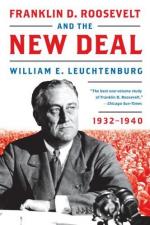|
This section contains 540 words (approx. 2 pages at 400 words per page) |

|
Economics
One of the major themes underlying the book is that of economics. The prevailing economic theory up until the Great Depression was called Classical Theory. This was based on balanced budgets and very little government intervention in the economy. The economy was believed to be self-correcting in that wages and prices would automatically adjust to eliminate any problems in terms of unemployment or inflation. No government policy action was required.
The problem was that wages and prices don't adjust automatically to eliminate economic problems. Some sort of government intervention in the form of deficit spending is a requirement to stimulate an economy in recession, and this was the viewpoint of the British economist John Maynard Keynes.
Franklin D. Roosevelt and the New Deal is basically William E. Leuchtenburg's recount of the first two years of the Roosevelt administration and the deficit spending programs they implemented trying to bring...
|
This section contains 540 words (approx. 2 pages at 400 words per page) |

|




